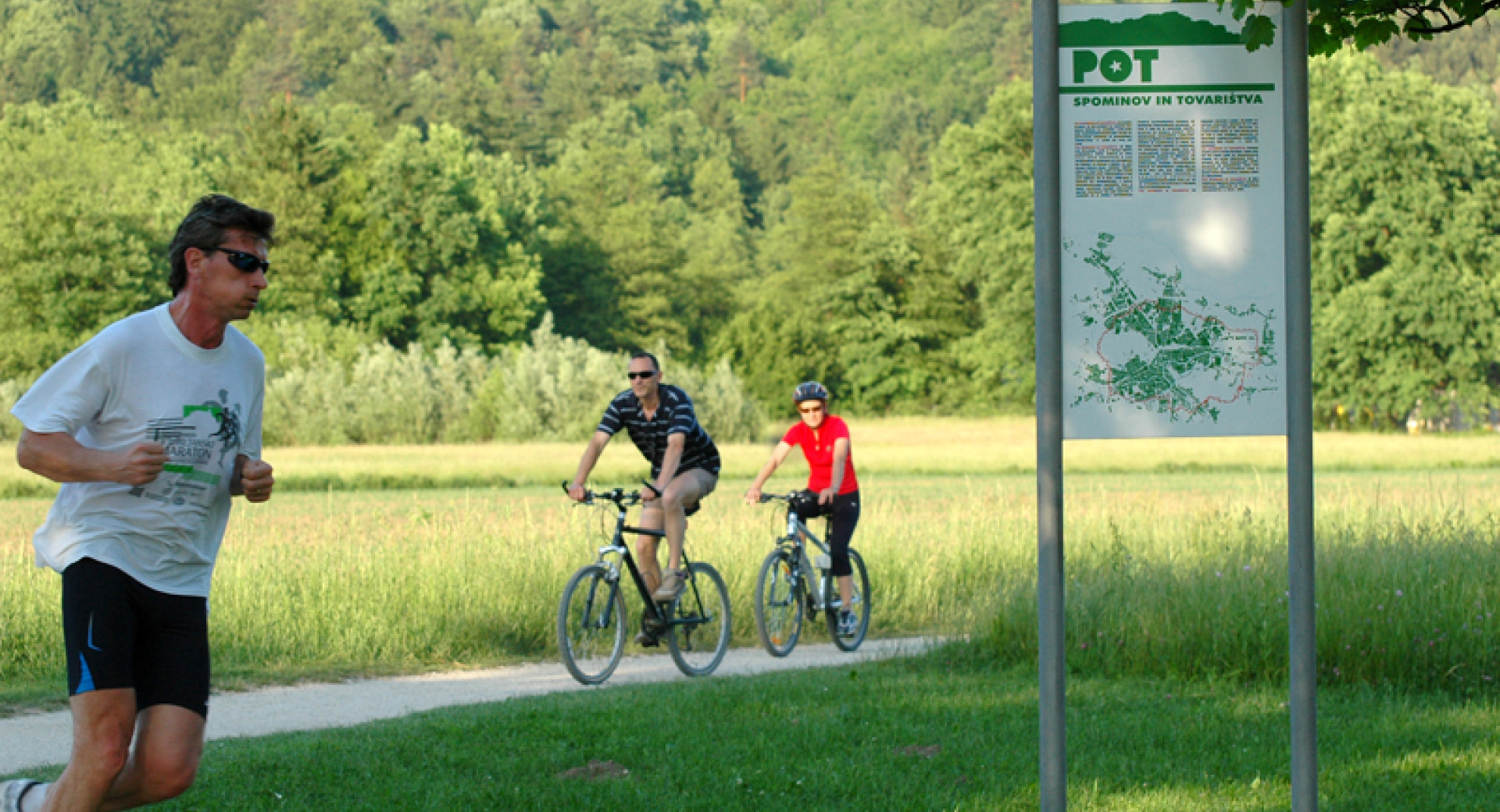The Path of Remembrance and Comradeship
The Path of Remembrance and Comradeship, which encircles Ljubljana, symbolizes dedication to a healthy lifestyle while at the same time serving as a reminder of the city's history.

Pot spominov in tovarištva ali zgolj Pot
It is a 35-kilometre recreational path running along the course of the military barbed-wire fence which surrounded Ljubljana during the Second World War. The path is mainly intended for walkers and runners, but cyclists using bicycles are allowed to ride along the path too on condition that pedestrians are not endangered. The riding of motor vehicles and horses, however, is prohibited.
The Path of Remembrance and Comradeship, sometimes referred to as 'The Path along the Barbed Wire' or 'The Green Ring', is mostly paved with gravel, only the sections leading through residential parts of the city are paved with asphalt. Several sections of the pathway are lined with trees. The path is signposted with information boards showing its course and marked with round metal markers built into the paving. The locations of Second World War bunkers along the path are marked by memorial pillars.
The following are the most popular parts of the path:
- the section between the Vič and Šiška areas of Ljubljana, from the Dolgi most suburb to the Koseze Pond,
- the section between the Bežigrad and Žale areas of Ljubljana, from the Stožice Sports Park to the Žale Cemetery,
- the section between the Fužine and Rudnik areas of Ljubljana, from Fužine Castle to the Dolenjska cesta road. This part of the Path leads across the wooded Golovec hill, which offers numerous opportunities for outdoor recreation.
Recreational March around Ljubljana
The annual Recreational March around Ljubljana, held on the first Saturday after 9 May, a red-letter day in the city's history, attracts large numbers of recreation enthusiasts of all ages. Those with a penchant for more strenuous activity can join the Threesomes Run along a 28 or 12-kilometre route for adults or a three-kilometre route for children. The event traditionally rounds off with a festive ceremony held in the city centre.
Ljubljana within a barbed wire fence (1942-1945)
During the Second World War, Ljubljana was a focal centre of the Resistance, the so called Liberation Front of the Slovene Nation, established on 27 April 1941. In 1942, the Italian occupying forces surrounded Ljubljana with a barbed wire fence to prevent contacts between the city and its hinterland.
The fence, along which there were 206 guard towers and bunkers, was guarded by approximately 1,300 soldiers and 400 policemen, who checked the ID of everyone passing the fence. Following the capitulation of Italy in 1943, the fence was taken charge of by the German army. The Liberation Army marched into Ljubljana on 9 May 1945, after the city had been enclosed by barbed wire for 1,170 days. The construction of the Path of Remembrance and Comradeship began soon after the war and was completed in 1985.
Attractions along the Path
The best known attractions located in the vicinity of the Path of Remembrance and Comradeship are the Žale Cemetery, renowned for its funeral home, designed by the architect Jože Plečnik, and Fužine Castle, which houses the Museum of Architecture and Design.
The suburban sections of the path offer plenty of opportunities to enjoy the beauty of nature. Particularly worth visiting are the Golovec hill and the Koseze Pond. In snowy winters, cross-country ski tracks are available alongside several sections of the Path. Those in need of refreshments can stop at the bars and restaurants scattered along the path, particularly in residential areas.
